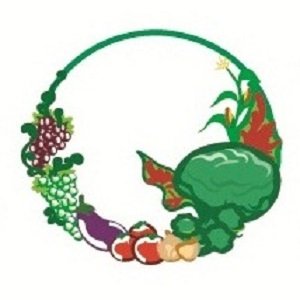Abby's Journal: Field Production Winter Work
Greetings CSA Members!
As we continue to search for our next CSA manager, I (field production coordinator, Abby!) have been creating winter CSA newsletters and social media while James Mabry heads up all things customer service. A big thanks to you all for your patience with us during this transition time! It's also been great to have Jack contributing writings for each newsletter. This week Jack is busy with other projects so I'm going to write a little here about what I've been up to this winter!
Yesterday Grace and I made the yearly trek to the off-grid home of our "soil gurus" Bob Dahse and Larissa Walk. Bob & Larissa are long time friends of Jack who have advised and done all sorts of work with Featherstone over the years. Their self sufficient and sustainable lifestyle is pretty inspiring and they really deserve an entire blog post dedicated just to them. I may suggest that to Jack for another blog post! Since 2017, Bob has been our go-to soil advisor. Each fall we take soil samples of all the fields we will be growing on for the next season, and send them on over to Bob.
Pictured above: Bob examining a field of winter squash during a summer farm visit.
Bob fully believes in feeding the SOIL, and allowing the soil to feed the plants through careful balancing of minerals and care of the biological life that makes it all possible. Many use fertilizers that are made to simply feed the plants. They stay in the soil for a short time and have to be replenished every year. With Bob's help, we aim to manage our soils in a way that builds organic matter, balances and replenishes nutrient reservoirs, and builds fertility to create the best environment for biological life to thrive. In turn, the soil bacteria will decompose residues and effectively convert them into the nutrients needed for crop growth. Ideally these nutrients will be available not for just one season, but for many future crops.
Since starting this system of soil management with Bob in 2017, we have seen great results. In the beginning we had to make a lot of pretty expensive mineral inputs to get the soil more balanced, but after our meeting this week, it is clear to see our work is paying off. Our inputs have gone way down and we have seen less destructive crop disease, especially in the brassica crops.
Now that I have my 2024 recommendations from Bob, I will put it all into a spreadsheet and get to planning! I can order manure for spring spreading and budget for minerals that will be spread as soon as the fields dry enough in late March or early April. I'll also be considering different options for cover crops to be planted before and after veggie crops, which are another way we keep the biologic life of the soil happy and healthy.
Pictured above: One of the cover crops we use is a mix of oats and peas. The peas form a beneficial relationship soil bacteria and fix nitrogen. The oats suppress weeds and build organic matter.
Other field production work this winter has centered around planning next year's crops. We are almost done with our 2024 crop plan, and have entered it into a digital format that allow us to create an easy to work with plan for seeding and fieldwork. Grace has been hard at work on the seed order and recently started plans to create a rack with lights where we can start some of our earliest hoop house crops (bound for spring CSA boxes!) that have to be seeded before we fire up the greenhouse.
I will be heading to Mexico in early February to visit the farmworkers and relax a bit- but as soon as I return we will get everything set to start seeding lettuces, kales, onions, and parsley the first week of March! I can't believe it's already that time of year!
Thanks for all of your support that allows us to do this good work year round!
Gratefully,
Abby



